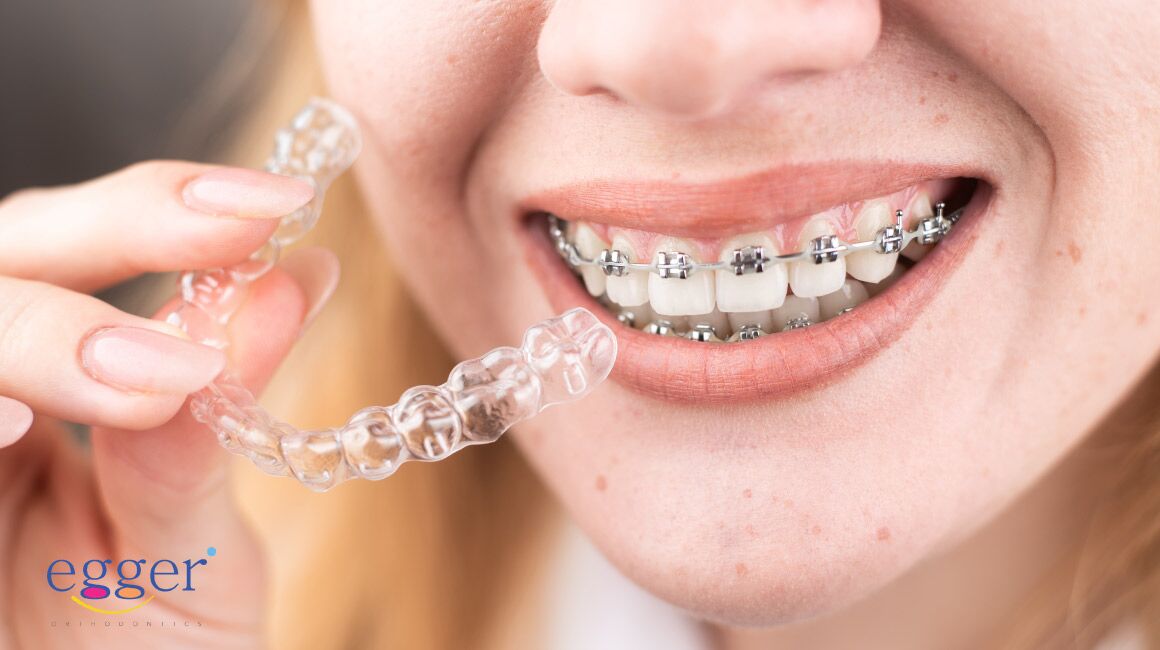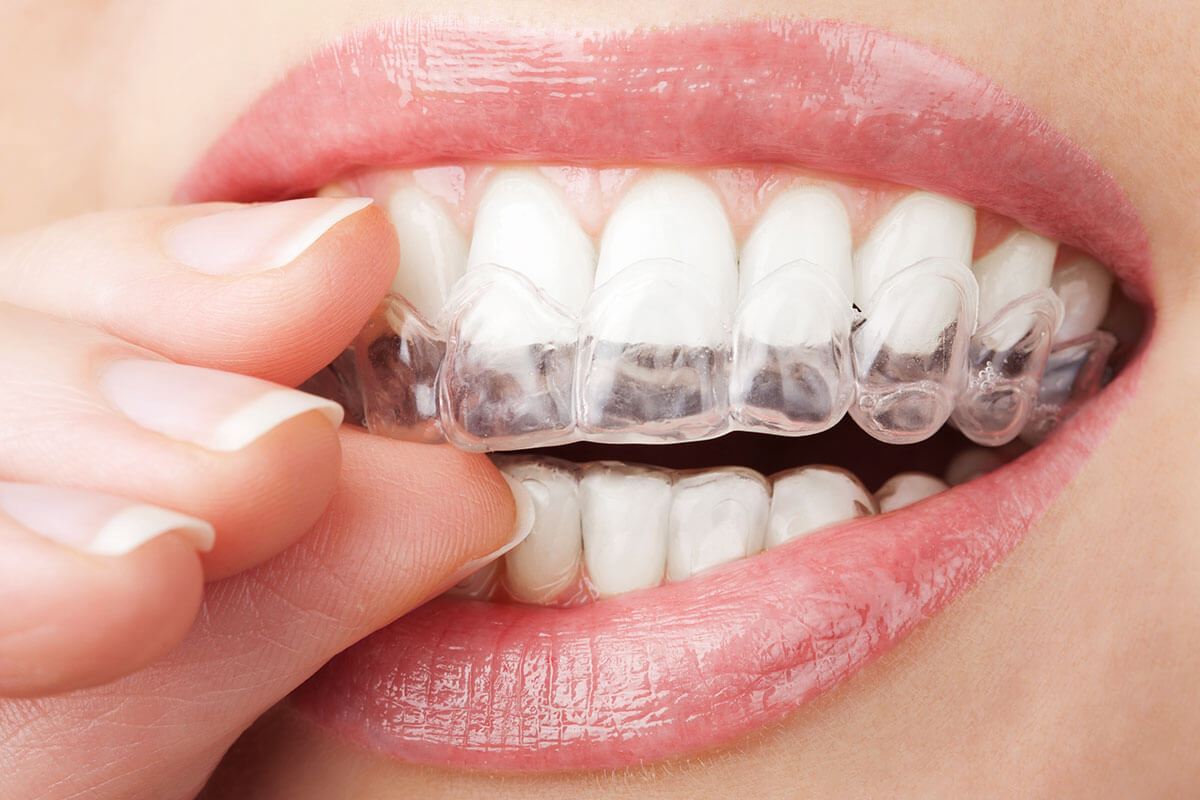Keeping Oral Health While Utilizing Invisalign: Tips for a Smooth Experience
Keeping Oral Health While Utilizing Invisalign: Tips for a Smooth Experience
Blog Article
Invisalign vs. Typical Braces: Which Choice Is Right for You?
When considering orthodontic treatment, the choice between Invisalign and standard braces provides a number of vital factors that merit cautious assessment. Invisalign supplies a discreet alternative with removable aligners, while standard dental braces provide a more visible yet effective option for extreme imbalance. Each alternative incorporates unique benefits and downsides connected to visual appeals, comfort, treatment period, and price. Understanding these nuances is essential for making a notified decision that aligns with your individual preferences and lifestyle. The inquiry remains: which alternative will best meet your orthodontic needs and expectations?
Introduction of Treatment Options

In contrast, typical braces contain metal brackets and cords that are bonded to the teeth. This technique applies continuous pressure with time to achieve placement. While effective for intricate orthodontic problems, traditional braces need normal check outs for changes and can position difficulties in keeping oral hygiene because of the trouble of cleaning around brackets and wires.
Both choices have their qualities, and the choice typically depends upon particular oral problems, way of living choices, and individual conformity. Inevitably, speaking with an orthodontic expert is critical for identifying the most appropriate therapy strategy customized to specific demands. Understanding the subtleties of each option can considerably influence the overall success of orthodontic therapy.
Aesthetic Considerations
A significant aspect affecting the selection in between Invisalign and standard braces is the aesthetic appeal each therapy supplies. Invisalign aligners are crafted from clear plastic, making them virtually invisible when put on. This very discreet look is especially attracting adults and young adults that might feel awkward regarding their orthodontic treatment. The capability to maintain an all-natural smile throughout the placement process can substantially improve the client's self-confidence in expert and social settings.
On the other hand, traditional braces include metal braces and cables, which can be much more recognizable. While developments in orthodontic modern technology have led to the advancement of smaller braces and tinted elastics, conventional dental braces still preserve a more obvious profile. For some individuals, the presence of dental braces might discourage them from looking for needed treatment.
Ultimately, the selection in between Invisalign and typical braces might depend upon personal choices concerning appearances. People who focus on discernment usually favor Invisalign, while those that are less concerned concerning visibility might go with conventional dental braces. Understanding the aesthetic implications of each choice is crucial for making an informed decision that aligns with one's way of life and choices.
Comfort and Convenience

In terms of comfort, Invisalign aligners are removable, making it possible for clients to appreciate their favored foods without constraint and maintain optimum dental health. Brushing and flossing are simplified, as the aligners can be obtained during these routines, whereas standard dental braces require careful steering around cords and brackets.
In contrast, conventional braces require routine changes, making them less convenient for those with active schedules. On the whole, the convenience and convenience of Invisalign make it an appealing selection for lots of individuals seeking orthodontic treatment.
Treatment Period and Performance
While both Invisalign and conventional braces work in dealing with oral misalignments, the period of therapy can differ considerably in between the two options. Generally, Invisalign therapy can take anywhere from 12 to 18 months, relying on the complexity of the situation. The clear aligners work by progressively shifting teeth into their wanted positions, and routine follow-ups with an orthodontist aid ensure development remains on course.
On the other hand, typical braces commonly call for a longer commitment, typically varying from 18 months to 3 years. This is due to their fixed nature and making look here use of cords and braces, which can be more efficient for complex cases and serious imbalances (Invisalign). The therapy efficiency of traditional braces is well-documented, as they enable exact modifications and higher control over tooth motion
Inevitably, the selection in between Invisalign and standard braces might rest on both the expected therapy period and the details oral issues handy. Consulting with an orthodontist is vital, as they can supply customized referrals based upon specific needs, ensuring the chosen approach lines up with preferred durations and results.
Cost Contrast and Insurance Options
Expense plays a substantial function in the decision-making process for individuals considering orthodontic treatment, whether going with Invisalign or standard dental braces. Generally, the price of Invisalign varieties from $3,000 to $8,000, while conventional braces normally cost between $2,000 and $6,000. Factors affecting these costs include the intricacy of the situation, the duration of therapy, and geographical place.
Insurance coverage can considerably affect out-of-pocket expenditures. Numerous dental insurance strategies provide partial insurance coverage for orthodontic treatments, yet the specifics can vary extensively. It is vital for patients to examine their insurance coverage to identify the degree of insurance coverage for either choice. Usually, conventional dental braces might be much more regularly covered by insurance coverage strategies contrasted to Invisalign, which some insurance firms categorize as an aesthetic procedure.
Additionally, a number of orthodontic techniques offer versatile have a peek at these guys settlement plans, making both treatment choices extra accessible. People should ask concerning potential financing alternatives and price cuts for upfront settlements. Assessing the complete cost, consisting of insurance benefits and layaway plan, is important for making an informed decision that lines up with both visual choices and budget plan factors to consider.

Conclusion
In summary, the selection between Invisalign and conventional dental braces hinges on numerous variables, consisting of visual choices, comfort, treatment duration, and expense. Invisalign uses a discreet, removable option that helps with oral hygiene and dietary flexibility, while typical dental braces might be more suitable for complex dental issues and frequently come at a lower cost factor. Eventually, examination with an orthodontist is necessary to analyze private scenarios and figure out the most appropriate therapy alternative for attaining ideal oral positioning.
When thinking about orthodontic treatment, the selection in between Invisalign and typical dental braces offers a number of crucial elements that merit mindful examination.Contrasting Invisalign and typical braces reveals distinct therapy options for orthodontic modification.While both Invisalign and conventional dental braces are effective in remedying dental imbalances, the duration of therapy can differ significantly in between the two alternatives.Price plays a significant duty in the decision-making procedure for individuals taking into consideration orthodontic treatment, whether deciding for Invisalign or conventional dental braces.In summary, the selection between Invisalign and standard braces hinges on numerous elements, consisting of aesthetic choices, comfort, therapy period, and cost.
Report this page